Article
Who Shuhadas are? Can you imagine?
Fariyal Mir
Published
1 month agoon
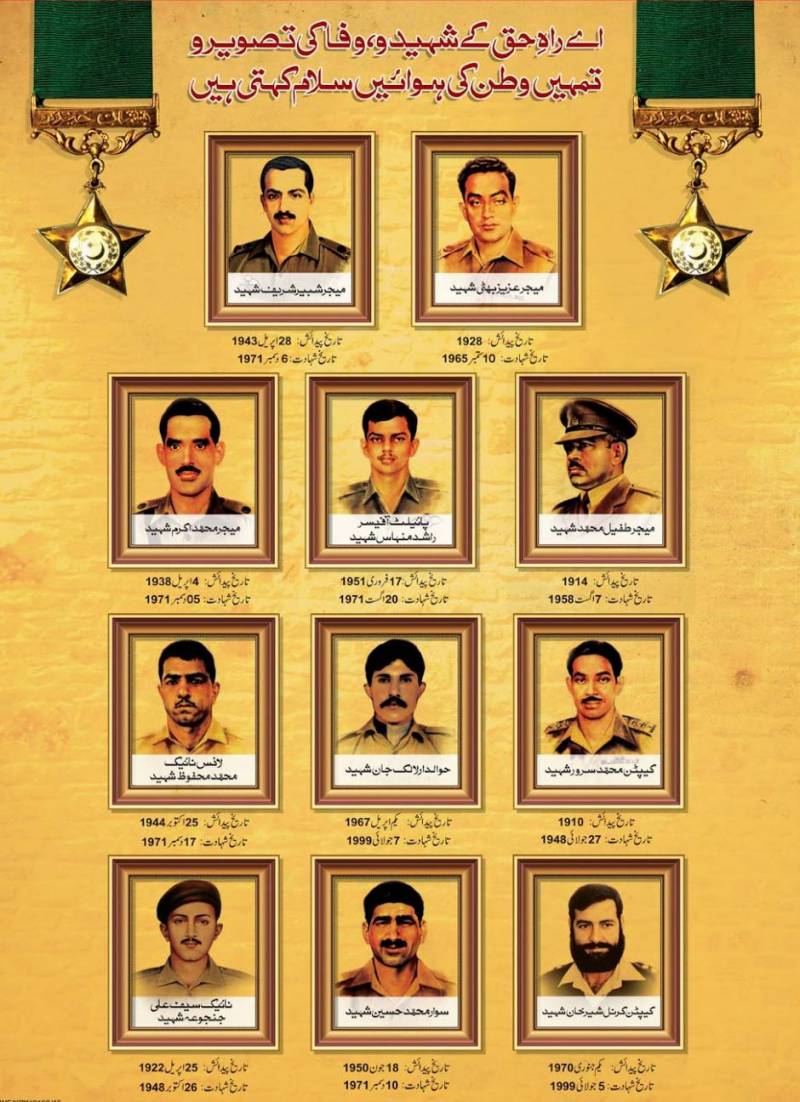
Who Shuhadas are? is a small question but the most difficult one to be answered and imagined. Words do not hold the power to describe the sacrifices of Shuhadas and no language can explain them so. Pakistan has its history of Shuhada before and after Independence. The armed forces of Pakistan have always been in the frontline of devotion and sacrifices. They are trained in ways that they see nothing when there is a threat than to sacrifices and protect. For them life is Pakistan and martyrdom is a price for it. They are the most generous and chosen people who cannot be compared. Though martyrs are folk like us but are very different and special. These high profile people also belong to a family, community, and region but for them, everything belongs to this land of Pakistan.
We cannot narrate the sacrifices of the people for the independence of this country because they are speechless. Let’s try to narrate the stories of the Shuhadas who devoted their lives during the Indo-Pak wars. Most of the Shuhadas of the wars have embraced martyrdom at the youngest age. Who they were? Some were the eldest of their parents and others were the middle one and youngest. Some were having other siblings as well whereas a few were single children of their parents. Some were married and others were yet to be married. Some were fathers to their children and many were expecting to be fathers. All of them were full of plans about their family’s future but ended them for the sake of their country. Armed forces always preferred the country over their family and this is the evidence of their devotion.
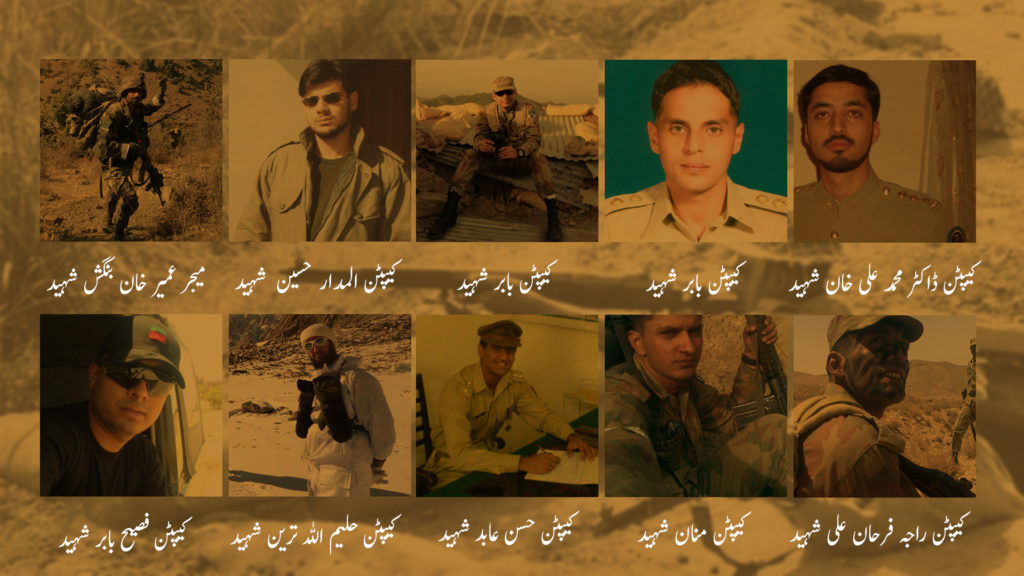
I am moved by this verse that:
“Koi Hamain Kia Khaak Mara Ga
Ham Tu Talabgar Hotay Hay Subha Sham Shahadad k”
The spirited people have proved this verse and themselves in all the wars. They countered back so efficiently and saved the independence of this land. One of the poets well described all the Shuhadas in a couplet that:
“Lagana Aag Jo Aya Tha Ashiyana ko
Wo Shoghla Apna Lahoo Sa Buja Diya Tum Nay”
It is not easy even to think about Shogla Bujana Lahoo says. But Shuhadas have done it. The most horrifying moment must be the one when you are near to death. And when death is violent then it is even more difficult to be imagined but Shuhadas have seen the cold face of death and smiled on it. They have seen the iron hand of death but shacked with them without hesitation. They jumped into the fire of the enemy to secure a high place in paradise. Their hearts must be full of love and worries about the future of their family but country loves always prevails. Armed forces never promise of their return back. A verse well defined their notion that:
“Ham Mout Sa Ishq Karnay Wala Ashaq Hay
Ham Say Kabi Zindagi Ka Soda Mat Karna”
We cannot express our gratitude to all the Shuhadas because you people are the worthiest beings: the poet has forced the words to describe you and said:
“Shaheedan-e-Wattan K Hosila Tha Deed K Qabil
Wohn Par Shukaar Karta Tha Jahan Par Sabar Mushkil Tha”
You people are being missed but you are the pride of the soil. #PakistanArmy#Zindabad
You may like
-
“Revive the spirit of Khudi — awaken the sleeping soul of the nation.”
-
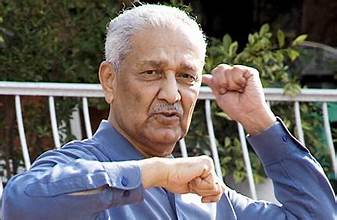

A name written in the heart of every Pakistani — Dr. Abdul Qadeer Khan.
-


.
-
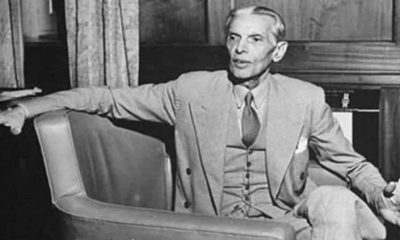

77th death anniversary of Quaid-e-Azam being observed today
-


“In the honor of their sacrifice, we stand united – Shuhada-e-Pakistan Ko Aik Qaum Ka Salam.”
-


A Tribute to Maj. Adnan Aslam – A Soldier’s Eternal Legacy
Article
“Steel Against Steel: Pakistan’s Resolve at Chawinda!”
Published
1 month agoon
September 8, 2025By
EDITOR
The Battle of Chawinda, one of the largest tank battles since World War II, is a significant chapter in the history of the 1965 Indo-Pak War. Fought near the town of Chawinda in the Sialkot sector of Pakistan, this battle stands as a testament to the strategic brilliance, resilience, and courage of the Pakistan Army in defending its territory against a much larger Indian force. Central to this battle was the tactical ingenuity displayed by Pakistani forces in countering and neutralizing the Indian tank offensive, which played a crucial role in the eventual stalemate.
Background
- Date: September 8 to September 22, 1965
- Location: Chawinda, near Sialkot, Pakistan
- Opposing Forces:
- Pakistan: 6th Armoured Division, 1st Armoured Division, and supporting infantry and artillery units.
- India: I Corps, 1st Armoured Division, 6th Mountain Division, and additional armored brigades.
- Objective: The Indian objective was to penetrate deep into Pakistani territory through the Sialkot sector, cutting off the Grand Trunk Road and advancing towards key Pakistani cities. Pakistan aimed to halt the Indian advance and protect Sialkot and surrounding areas.
The Indian Tank Offensive
India launched its offensive with a formidable force of tanks, including Centurion and Sherman tanks, supported by infantry and artillery. The plan was to exploit the flat terrain of the Sialkot sector, which was ideal for armored warfare, and overwhelm the Pakistani defenses with sheer numerical superiority. The Indian strategy relied heavily on the speed and firepower of their armored units to break through Pakistani lines and achieve a decisive victory.
Pakistani Response: Tactical Brilliance
Despite being outnumbered and facing a more powerful adversary, the Pakistan Army displayed remarkable strategic and tactical acumen in countering the Indian offensive.
1. Defensive Positioning:
- Pakistani forces, anticipating the Indian armored thrust, had prepared strong defensive positions around Chawinda. The terrain was carefully utilized to create choke points, where Indian tanks could be funneled into kill zones covered by anti-tank guns and artillery.
- Pakistani troops made effective use of natural and man-made obstacles to slow down the Indian advance, forcing the Indian tanks to engage in a frontal assault under less-than-ideal conditions.
2. Artillery and Anti-Tank Warfare:
- Pakistan’s artillery played a crucial role in blunting the Indian offensive. Well-coordinated artillery barrages targeted Indian tank formations, causing significant damage and disrupting their momentum.
- The use of recoilless rifles and anti-tank mines proved effective in neutralizing the Indian tanks. Pakistani soldiers, often in small teams, engaged Indian tanks at close range, exploiting weaknesses in their armor.
3. Infantry-Tank Coordination:
- The Pakistani infantry worked closely with their armored units, providing support and covering fire, which allowed the tanks to maneuver and engage the enemy effectively. The close coordination between infantry and armor was a key factor in the success of the defensive operations.
- Pakistani tanks, although fewer in number, were used in concentrated counterattacks at critical junctures. These counterattacks, supported by infantry, disrupted Indian tank formations and prevented them from gaining the initiative.
4. Night Operations and Ambushes:
- Pakistani forces employed night operations and ambush tactics to harass and weaken the Indian tank units. Under the cover of darkness, Pakistani troops launched surprise attacks on Indian positions, inflicting casualties and causing confusion.
- The use of night attacks and hit-and-run tactics kept the Indian forces off balance, preventing them from consolidating their gains and forcing them to remain on the defensive.
5. Psychological Warfare:
- The resilience and determination of the Pakistani soldiers played a crucial role in breaking the morale of the Indian forces. Despite heavy bombardments and relentless assaults, the Pakistani defenders held their ground, leading to a growing sense of frustration and fatigue among the Indian troops.
- Propaganda and misinformation were also used effectively to create uncertainty and hesitation within the Indian ranks, further undermining their offensive capabilities.
Outcome and Significance
The Battle of Chawinda ended in a stalemate, with neither side able to achieve a decisive victory. However, the battle is widely regarded as a strategic victory for Pakistan, as it successfully halted the Indian advance and prevented a major breakthrough in the Sialkot sector.
- Casualties and Losses:
- Both sides suffered heavy casualties, with significant losses in men and material. Indian tank losses were particularly severe, with a large number of tanks destroyed or damaged during the battle.
- The Pakistani forces, despite their smaller size, managed to inflict disproportionate losses on the Indian Army, demonstrating the effectiveness of their defensive strategy and tactical ingenuity.
- Legacy:
- The Battle of Chawinda is remembered as a symbol of Pakistani resilience and military skill. It showcased the importance of tactical innovation, effective use of terrain, and the critical role of morale and leadership in modern warfare.
- The battle also highlighted the limitations of armored warfare in the face of determined and well-prepared defenders, challenging the conventional wisdom that tanks could achieve quick and decisive results on the battlefield.
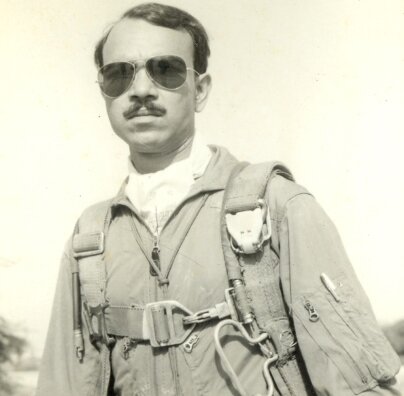
Muhammad Mahmood Alam, often referred to as M.M. Alam, was a legendary Pakistani fighter pilot who gained fame during the 1965 Pak-Indo War. He is celebrated for his exceptional skills and courage in combat, particularly for downing five Indian Hawker Hunter fighter aircraft in a single dogfight in less than a minute. This remarkable achievement earned him the nickname “Little Dragon” and solidified his reputation as one of Pakistan’s most celebrated fighter pilots.
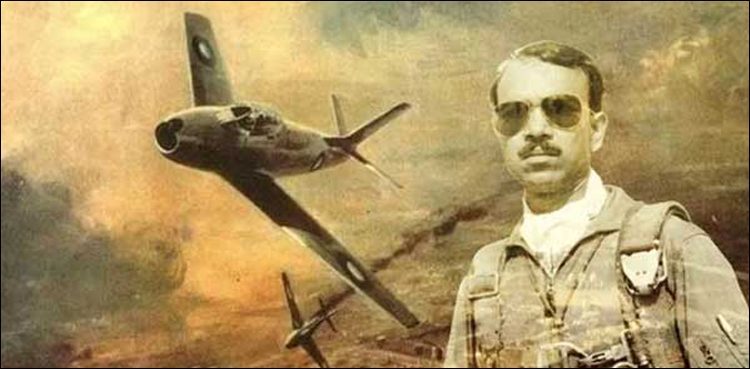
M.M. Alam’s extraordinary feat of shooting down five enemy aircraft in such a short span of time is still regarded as one of the most significant accomplishments in aerial combat history. He was an inspiration to generations of Pakistani pilots and remains a symbol of bravery and skill in the Pakistan Air Force’s history.
While the term “Top Gun” is often associated with elite fighter pilots, it’s essential to note that M.M. Alam achieved legendary status not only within Pakistan but also on the international stage due to his exceptional combat performance. His legacy as a real-life “Top Gun” endures in the annals of aviation history
M.M. Alam’s Aircraft: The F-86 Sabre and the Indian Hawker Hunter
M.M. Alam’s Aircraft: The F-86 Sabre
1. Overview:
- Type: Fighter aircraft
- Manufacturer: North American Aviation
- Role: Air superiority fighter and ground attack
- First Flight: October 1, 1947
- Introduced: 1949
- Primary User: United States Air Force (USAF), also used by Pakistan Air Force (PAF) and various other air forces globally
2. Design and Features:
- The F-86 Sabre was a transonic jet fighter aircraft that became one of the most prominent American fighter planes during the Korean War and throughout the early Cold War period.
- Engine: Powered by a General Electric J47 turbojet engine, capable of producing about 5,200 lbf of thrust.
- Speed: The Sabre could reach a top speed of approximately 687 mph (Mach 0.9), making it one of the fastest jet fighters of its time.
- Armament: The aircraft was equipped with six .50 caliber M3 Browning machine guns mounted in the nose. It could also carry bombs and rockets for ground attack missions.
- Maneuverability: The Sabre’s swept-wing design contributed to its excellent maneuverability at high speeds, which was crucial during dogfights.
- Combat Role: The F-86 Sabre was primarily designed for air-to-air combat but was versatile enough to perform ground-attack missions. Its agility and speed made it a formidable adversary in dogfights, particularly against Soviet-built MiG-15s during the Korean War.
3. M.M. Alam and the F-86 Sabre:
- During the 1965 Indo-Pak war, M.M. Alam flew the F-86 Sabre and achieved extraordinary success in aerial combat.
- Alam’s mastery of the Sabre was evident in his ability to outmaneuver and outshoot the Indian Air Force’s (IAF) more modern aircraft, particularly the Hawker Hunter.
- His most famous achievement came on September 7, 1965, when he shot down five IAF Hawker Hunters in less than a minute using the F-86 Sabre, setting a world record for the fastest air-to-air kills.
Indian Aircraft: The Hawker Hunter
1. Overview:
- Type: Fighter aircraft
- Manufacturer: Hawker Aircraft
- Role: Fighter-bomber, ground attack, and interceptor
- First Flight: July 20, 1951
- Introduced: 1954
- Primary User: Royal Air Force (RAF), Indian Air Force (IAF), and various other air forces globally
2. Design and Features:
- The Hawker Hunter was a transonic British jet fighter that served as the primary front-line fighter for the Royal Air Force and was extensively used by the Indian Air Force during the 1965 Indo-Pak war.
- Engine: Powered by a Rolls-Royce Avon turbojet engine, producing between 7,500 lbf and 10,150 lbf of thrust depending on the variant.
- Speed: The Hunter could reach a top speed of approximately 715 mph (Mach 0.94).
- Armament: The Hunter was equipped with four 30mm ADEN cannons and could carry a variety of bombs, rockets, and missiles for air-to-ground and air-to-air combat.
- Maneuverability: The Hunter was known for its smooth handling, robust design, and reliability. Its performance made it a popular aircraft among pilots.
- Combat Role: The Hawker Hunter served as both an interceptor and a ground-attack aircraft. Its versatile design allowed it to be used in multiple roles, from air superiority missions to close air support.
3. Indian Air Force and the Hawker Hunter:
- The Hawker Hunter was one of the primary aircraft used by the Indian Air Force during the 1965 Indo-Pak war. It was considered a superior aircraft to many of the older jet fighters in service at the time.
- Despite the Hunter’s technological advantages, M.M. Alam’s exceptional flying skills allowed him to defeat these aircraft decisively during dogfights, most notably in the skies over Sargodha.
- The Hunter was involved in several key air battles during the conflict, and its pilots were often engaged by PAF’s F-86 Sabres, including those flown by M.M. Alam.
Comparative Analysis
**1. Technological Comparison:
- F-86 Sabre: Despite being older and less powerful compared to the Hawker Hunter, the F-86 Sabre was highly maneuverable and had a combat-proven track record. It was an agile and reliable aircraft, particularly effective in dogfights.
- Hawker Hunter: The Hunter was a more modern aircraft with better speed, armament, and avionics. It had a higher top speed and could carry a more diverse payload, making it more versatile in various combat roles.
2. Tactical Superiority:
- M.M. Alam’s Tactical Genius: The technological edge of the Hawker Hunter was effectively neutralized by M.M. Alam’s superior tactics, quick decision-making, and precise shooting. His deep understanding of the F-86 Sabre’s capabilities allowed him to exploit its strengths and outmaneuver the Hunters.
- Dogfight Success: Alam’s ability to down five Hawker Hunters in under a minute was not just a demonstration of his flying skills but also a reflection of his deep tactical acumen. He capitalized on the Sabre’s strengths, such as its rapid acceleration and tighter turning radius, to dominate the aerial battle.
3. Historical Impact:
- Legacy of the F-86 Sabre: The success of the F-86 Sabre in the hands of pilots like M.M. Alam has become a celebrated chapter in military aviation history. The aircraft, despite its age, proved that skill and strategy could triumph over technological superiority.
- Role of the Hawker Hunter: While the Hawker Hunter was a formidable aircraft, its performance in the 1965 war, particularly against M.M. Alam, highlighted the importance of pilot expertise and tactical proficiency in determining the outcome of air engagements.
Conclusion
The aerial battles between the F-86 Sabre and the Hawker Hunter during the 1965 Indo-Pak war are a testament to the enduring truth that while technology plays a critical role in modern warfare, it is the skill, strategy, and courage of the pilot that ultimately determine victory. M.M. Alam’s legendary feats in the F-86 Sabre against the Indian Hawker Hunters remain one of the most remarkable stories in the history of aerial combat, and they continue to inspire future generations of fighter pilots around the world.

“Revive the spirit of Khudi — awaken the sleeping soul of the nation.”

A name written in the heart of every Pakistani — Dr. Abdul Qadeer Khan.









